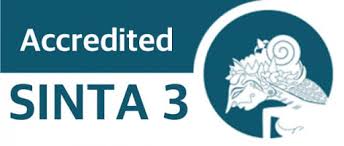Pengembangan Media Pembelajaran Interaktif Game PowerPoint Materi Siklus Makhluk Hidup Pada Siswa Kelas IV Sekolah Dasar
DOI:
https://doi.org/10.54069/attadrib.v5i2.367Keywords:
PowerPoint Game, Interactive Learning Media, Research and Development, Life CycleAbstract
Technological developments also have an impact on the world of education. Teachers to be able to use technology to create learning that is fun, interactive and motivating. One of them is using a computer program, namely making interactive learning media for PowerPoint games. The purpose of this study is to determine the response of teachers and students as well as the effectiveness of interactive learning media PowerPoint game material cycle of living things in fourth grade students of SDI Asy-Syarif. This study uses Research and Development research using the ADDIE model, namely through the stages of analysis, design, development, implementation, and evaluation as research steps. Data collection is done by observation, interviews, expert validation, and questionnaires. The data analysis techniques used were validation sheet analysis, questionnaire analysis, and quantitative data analysis. The results of this study indicate how accurate material experts are 92%, media experts are 86%, and linguists are 97.7%. The validation results indicate that the PowerPoint game interactive learning media is very feasible to use. The results of student responses get a prize of 95.2% with a very good category while the results of the teacher's response get a prize of 82.5% with a good category to use. The quantitative data analysis shows an average of 60.60%. So it can be said that the PowerPoint interactive game learning media developed is very feasible, good for use and quite effective for improving student learning outcomes.
Downloads
References
Amin, C., & Priyono, A. (2009). Ilmu Pengetahuan Alam 4 Untuk SD dan MI Kelas IV. Jakarta: Pusat Perbukuan Departemen Pendidikan Nasional.
Asyhar, R. (2011). Kreatif Mengembangkan Media Pembelajaran. Jakarta: Gaung Persada Press.
Branch, R. M. (2009). Instructional Design: The ADDIE Approach. New York: Springer.
Hisbullah, & Selvi, N. (2018). Pembelajaran Ilmu Pengetahuan Alam Di Sekolah Dasar. Makasar: Penerbit Aksara Timur.
Kemenkeu. (2005, May 16). jdih.kemenkeu. Dipetik Oktober 27, 2021, dari jdih.kemenkeu: https://jdih.kemenkeu.go.id/fulltext/2005/19TAHUN2005PP.HTM
Laelasari, E., & dkk. (2018). Model Gamifikasi dalam Peningkatan Motivas Belajar Peserta Didik Pendidikan Kesetaraan Program Paket C Daring. Bandung: PP PAUD dan DIKMAS Jawa Barat.
Majid, A. (2005). Perencanaan Pembelajaran. Bandung: Remaja Rosdakarya.
Munadi, Y. (2003). Media Pembelajaran; Sebuah Pendekatan Baru. Jakarta: REFERENSI.
Munir. (2015). MULTIMEDIA Konsep & Aplikasi Dalam Pendidikan. Bandung: ALFABETA.
Rayanto, Y. H., & Sugianti. (2020). Penelitian Pengembangan Model ADDIE dan R2D2 : Teori dan Praktik. Pasuruan: Lembaga Academic & Research Institute.
Robert Heinich, d. (2002). Instructional Media and Technologyies for Learning. New Jersey: Prentice Hall.
Rohani, A. (1997). Media Instruksional Edukatif. Jakarta: PT. Reinka Cipta.
Rosyid, M. Z., Sa'diyah, H., & Septiana, N. (2019). Ragam Media Pembelajaran. Malang: Literasi Nusantara.
Rosyidi, A. W. (2009). Media Pembelajaran Bahasa Arab. Malang: UIN-Malang Press.
Sabri, A. (2005). Strategi Belajar Mengajar dan Micro Teaching. Jakarta: Quantum Teaching.
Sanaky, H. A. (2013). Media Pembelajaran. Yogyakarta: KAUKABA DIPANTARA.
Sugiyono. ( 2015). Metode Penelitian Pendidikan (Pendekatan Kuantitatif, Kualitatif, dan R&D). Bandung: ALFABETA.
Sugiyono. (2015). Metode Penelitian Pendekatan Kuantitatif, Kualitatif dan R&D. Bandung: Alfabeta.
Sugiyono. (2019). Metode Penelitian & Pengembangan (Research and Development/R&D). Bandung: Alfabeta.
Sumatowa, U. (2016). Pembelajaran IPA di Sekolah Dasar. Jakarta: Indeks.
Syukur, F. (2005). Teknologi Pendidikan. Semarang: RaSAIL.
Dilia, D. I., Rony, R., & Trianawati, A. (2022). Pengaruh Ta’zir Terhadap Akhlak Santri Putri Pondok Pesantren. At-Tadzkir: Islamic Education Journal, 1(1), Art. 1.
Fatimah, F. S., Asy’ari, H., Sandria, A., & Nasucha, J. A. (2023). Learning Fiqh Based on the TAPPS (Think Aloud Pair Problem Solving) Method in Improving Student Learning Outcomes. At-Tadzkir: Islamic Education Journal, 2(1), Art. 1.
Tarwi, M., & Naimah, F. U. (2022). Implementasi Contextual Teaching and Learning Pada Pembelajaran Aswaja. At-Tadzkir: Islamic Education Journal, 1(1), Art. 1.
Downloads
Published
How to Cite
Issue
Section
License
Copyright (c) 2022 Amirotush Sholihah, Akhmad Fauzi, Yhasinta Agustyarini

This work is licensed under a Creative Commons Attribution-ShareAlike 4.0 International License.





